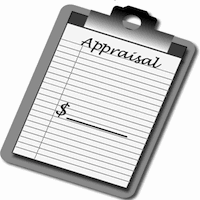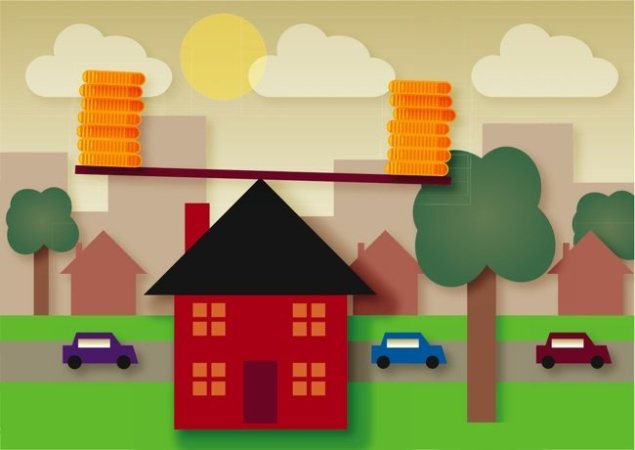We may earn revenue from the products available on this page and participate in affiliate programs. Learn More ›
You know what you paid for your home and how much the house next door costs. You know what you’ve put into renovations. But what you may not know is how much a lender is willing to finance if your house is for sale, if you’re in the market to refinance, or if you’re considering adding a home equity line of credit (HELOC). That’s where an appraisal comes in. Appraisals can also be used to divide property during a divorce or estate settlement, determine a home’s value in order to remove mortgage insurance, or set a value for tax purposes.
In real estate transactions, appraisers determine a property’s fair market value, which is the most likely price for which it would sell in a free market. The lender then uses this information to determine how much to lend against the property, whether it’s an outright sale, a refinance, or a home equity. If you aren’t familiar with the appraisal process, it helps to see how professionals arrive at the numbers that help lenders arrive at a figure. Here’s a look at how they work.
The Basics
Since the government controls how appraisals are conducted, they’re awash in regulations. As a general rule in selling a home, the appraiser is hired by the lender and the lender passes the cost along to the buyer, usually in the application fee. In a refinancing or when obtaining a home equity, the homeowner pays for the appraisal.
An appraiser compares the sale price of a home with that of similar homes that have recently sold in the same area. These are called comparables. Although there is no set rule, when a lender agrees to finance a mortgage, he wants to see a minimum of three comparables. Appraisers try to make an apple-to-apple comparison. For example, an appraiser would not contrast a 1,700-square-foot ranch with a two-story Cape Cod that’s twice the size.
The cost of an appraisal varies by region, but a buyer should reasonably expect it to add $300 to $500 to closing costs. A homeowner who refinances or adds a second mortgage may be asked to pay the fee up front.
Appraisals Estimate Value
John Bredemeyer of Realcorp, an Omaha appraisal firm, says the appraisal is not an analysis of the agreed-upon sales price but an opinion of the property’s value. “The price is the part that the buyer and seller agree on, and it can be the same as, higher than, or lower than the market value,” he says. The appraisal, on the other hand, is an estimate of the most likely price the property would fetch under normal market conditions and it is used to determine how much money the owner can borrow with the house as collateral.
A real estate appraiser inspects the property, but this step isn’t the same as a home inspection commissioned by a buyer. An appraiser estimates a home’s value while an inspector looks at its physical condition. Both an appraiser and inspector check out the inside of the home, but an appraiser is there to verify the number and types of rooms, floor plan, square footage, age, general condition, and listed amenities. An appraiser may measure the rooms and lot, noting the location as well as obvious defects. Inspectors report on both large and small problems. For example, while an appraiser would not check electrical outlets to make certain they are working, an inspector would.
The Appraisal’s Too Low—Now What?
What if the property appraises for less than the amount you’re hoping for? Bredemeyer says you can challenge the appraisal by presenting additional information. Consider having your real estate agent put together a package of comparables that weigh in your favor or point out amenities that might have been overlooked. There’s no guarantee you’ll receive an adjustment on the appraisal, but it’s worth trying.
Head Off Potential Problems
Rather than being hit with a low appraisal, avoid the kinds of problems that derail sales. For example, if you failed to obtain proper permits when you remodeled or put an addition on your home, you might have an issue.
In many cases, unpermitted work can stop a home’s sale faster than a hammer drives a nail. How can you tell if an addition is properly permitted if you didn’t add it? Take a look at the sketches on file at your county or city property tax office. Chances are good that if the addition doesn’t show up, the project didn’t have a permit.
Although lack of a permit won’t necessarily stop a home sale from going through, it could affect the evaluation. If permits are found lacking, Bredemeyer suggests talking to local officials and securing one after the fact. It may cost you a penalty, he says, but in most places there won’t be a problem if there’s no conflict with setback lines or zoning.
Another surefire way to lower your future appraisal value is to overbuild for the neighborhood. If the streets of your subdivision are lined with modest three-bedroom homes and you double the investment on your place, you’re going to have a hard, if not impossible, time finding comparables. Owning the biggest and fanciest house on the block can be a deal killer when the appraisal comes through. Bredemeyer recommends checking with an appraiser before you proceed with big projects. “Engage an appraiser on the front end,” he says. “Don’t wait until you’ve got a dog in that fight.”
Advice from an Appraiser
John Brenan, director of research and technical issues for the Appraisal Foundation in Washington, D.C., says each state has its own licensing requirements. His agency makes sure appraisers stick to the rules. Both the buyer and seller “are caught up in the emotion of the transaction,” Brenan says. “The bank needs to know what it’s worth from an independent, impartial analysis.”
Brenan advises homeowners to make sure improvements match the area and understand that your investment won’t always yield a dollar-for-dollar return on appraisal. “Cost does not necessarily equal value,” Brenan says.
But it’s also worth remembering that those improvements may very well be what sells your home.
If you need a qualified appraiser, check out the organizations listed on the Appraisal Foundation website.






